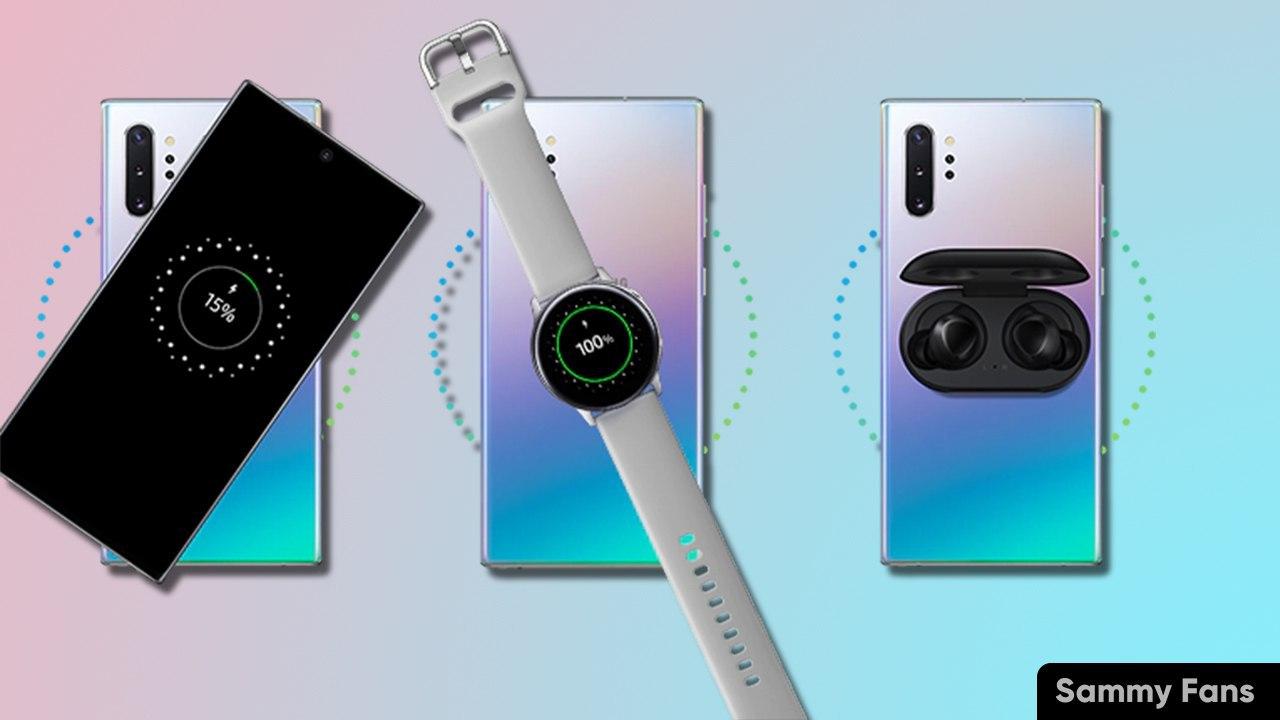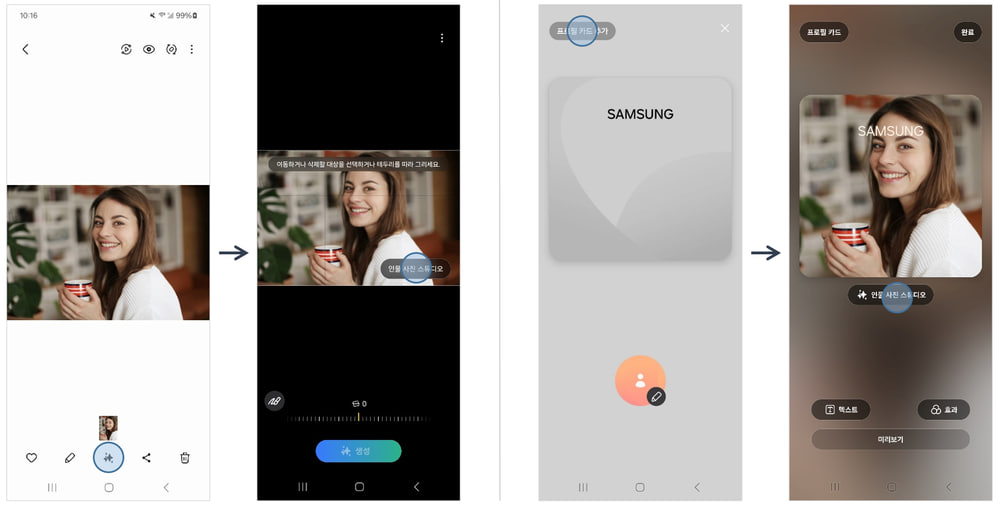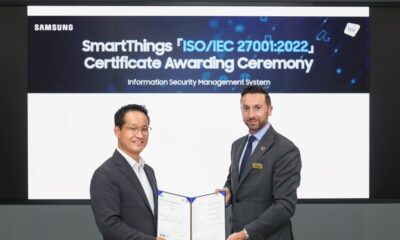Tips
How to fix Wireless PowerShare issues on Samsung phones

Samsung wireless PowerShare is an innovative feature that allows you to convert your Samsung flagship into wireless chargers. Also known as reverse wireless charging, it gives you the power to share your battery and easily charge the Galaxy Watch or Galaxy Buds+.
It works on Qi-certified devices, which is standard, so as long as you can charge the device via Qi, you can give some power from your phone.
When you have a low battery, it is very easy to get a boost with power-sharing. To use the wireless PowerShare, place your Galaxy S10, Note 10, S20, Note 20 series, Z Flip, or Z Fold 2 on the rear backside on a hard surface such as a table. Then place the charging device on the back of the phone. The charging screen should appear on the screen, or in the case of Galaxy Buds+, the charging light will indicate.
Read More: Samsung Odin: How to install firmware manually
However, other Qi devices may not be compatible with Wireless PowerShare. The Wireless PowerShare is available on Galaxy S20, S20+, S20 Ultra, Z Flip, Note10, Note10+, S10e, S10, S10+, and Fold.
If somehow you are facing any issues related to your Wireless PowerShare features during charging your device, below are the troubleshooting that can fix this problem.
NOTE: Wireless PowerShare works with most Qi-Certified devices. Requires a minimum 30% battery to share. The speed and power efficiency of charge vary by device. May not work with some accessories, covers, or other manufacturer’s devices. If you have trouble connecting or charging is slow, remove any cover from each device.
Note: In areas with low signal, wireless charging may interfere with call and data reception.
How to fix Wireless PowerShare issues
Remove third-party cases or covers from both devices.
- Wireless PowerShare will not work through particularly thick cases, and some materials may prevent charging. Remove any third-party cases or covers from your Galaxy phone and Samsung device with Qi charging standard.
- You should also remove the headphones. Do not use any while sharing power because doing so may affect nearby devices.
Make sure the phone that is providing power has sufficient charge.
- If the phone sharing power has less than 30 percent battery and is not plugged in, Wireless PowerShare will not turn on.
- However, if you charge the phone while wirelessly charging another device, the charging speed may decrease or the device may not charge properly.
Turn on Wireless PowerShare.
- On the phone with Wireless PowerShare, swipe down from the top of the screen with two fingers to access the Quick Settings panel. Then, Swipe to and tap the Wireless PowerShare icon to turn on the feature.
Note: If you are using a Galaxy Fold, please close the phone before starting Wireless PowerShare.
Place the devices on a flat surface with plenty of space.
- Because the position of the wireless charging coils can vary by device, you may need to slowly move the devices until they are in the correct position. When charging starts, the PowerShare phone will vibrate and play a tone.
- With all charging, some heat is generated during the process, especially if both devices are charging simultaneously. Wireless PowerShare will turn off if either device becomes too warm.

One UI
One UI 6.1.1’s Motion Clipper feature coming to these Samsung devices

One UI 6.1.1 introduced several new features and enhancements, one of which is the Motion Clipper feature of Editor. This feature lets you enhance your photos and create unique GIFs and stickers. This tool is perfect and useful for those who want to add a bit of fun and creativity to their photos and share them.
Motion Clipper is a minor yet powerful feature of One UI 6.1.1 that allows you to turn a part of your Motion Photos into animated GIFs or motion stickers. Users can easily use this feature when they have a motion photo in the Gallery app.
You have to open the motion photo in the Gallery app and long-press on a person or object you want to select. By doing so, you create a GIF or sticker from it. You can now use these custom GIFs and stickers on messenger apps or social media platforms that support Sticker Center.

Image Credit: Samsung
Currently, Motion Clipper is available on select Samsung models including the Galaxy Z Fold 6 and Flip 6. Additionally, several other flagships will get this feature with next major update.
These Galaxy devices will soon get the Motion Clipper feature of One UI 6.1.1.
Galaxy Z series
- Galaxy Z Fold 5
- Galaxy Z Flip 5
- Galaxy Z Fold 4
- Galaxy Z Flip 4
Galaxy S series
- Galaxy S22
- Galaxy S22 Plus
- Galaxy S22 Ultra
- Galaxy S23
- Galaxy S23 Plus
- Galaxy S23 Ultra
- Galaxy S24
- Galaxy S24 Plus
- Galaxy S24 Ultra
Galaxy Tab Series
- Galaxy Tab S8
- Galaxy Tab S8 Plus
- Galaxy Tab S8 Ultra
- Galaxy Tab S9
- Galaxy Tab S9 Plus
- Galaxy Tab S9 Ultra
One UI 6.1.1 will bring Sketch to Image feature to older Samsung devices
Tips
Here’s how to use gesture features of Samsung Galaxy Ring

On July 10, Samsung launched the smallest and most compact product within the Galaxy lineup, the Galaxy Ring. It offers several innovative health management functions along with an exciting way to control your phone using simple gestures. You can easily activate gesture features on your Galaxy Ring.
Samsung Galaxy Ring’s gesture feature lets you turn on an alarm or take a photo or video while the camera app is running by double-clicking your finger and thumb while wearing the ring.
How to activate gestures on Galaxy Ring :
To use the Galaxy Ring’s gesture controls, follow these steps:
- Open the Galaxy Wearable app on the smartphone connected to the Galaxy Ring.
- Navigate to the “Gestures” section within the Galaxy Ring’ Settings.
- Choose which functions you want to control with gestures. Options include dismissing an alarm or taking a photo or video.

After you have chosen your desired functions, you can start using them by performing a simple gesture. To dismiss an alarm or capture a photo or video, double-tap with your finger and thumb while wearing the Galaxy Ring. This gesture will start the selected function without needing to touch your phone.
If you have a Galaxy Z Fold 6 or Z Flip 6 model, you can start using these features. This feature will be extended to other Galaxy devices through future software updates.
Galaxy Ring
Samsung Galaxy Ring features a sleek design with dimensions of 7.0 mm x 2.6 mm, 24-hour-a-day health monitoring, long-lasting battery from 18mAh (Size 5) to 23.5mAh (Size 13), Galaxy AI features, and more.
Moreover, the Galaxy Ring provides comprehensive health insights and analysis via the Samsung Health app without any additional fees. It gives detailed metrics on sleep patterns, including movement, sleep latency, heart rate, and breathing rate during sleep. It also introduces Energy score and Wellness tips for daily health insights.
Samsung finally releases Galaxy Ring: Here’s all you need to know
Samsung
Samsung One UI 6.1.1 Galaxy AI’s Portrait Studio

Samsung launched the Galaxy Z Flip 6 and Galaxy Z Fold 6 with One UI 6.1.1 software, introducing an impressive feature called Portrait Studio. This feature uses generative AI to transform normal photos into artistic portraits with just a few taps.
Portrait Studio of One UI 6.1.1 is accessible through Gallery and Contacts apps. It offers four different styles of portraits- Comic, 3D Character, Watercolor, and Sketch. Whether you prefer a comic-inspired look or a watercolor effect, there’s a style for every taste.
The process of using the Portrait Studio is very simple. First, select a portrait photo from your gallery, pick the desired style, and let the AI work its magic. Even if there are multiple people in the photo, you can select which individual you want the portrait created for.

The AI processing takes around 15 seconds to generate the portrait, and if you’re not completely satisfied with the result, you can easily create another version with the ‘Create Again’ button. Final Portraits can be saved through the photo editor or you can set directly it as a profile image for contacts.

The quality of the generated portrait improves with higher-resolution photos where the subject is visible and facing forward. Also, all portraits created using Portrait Studio contain a watermark in the bottom left corner to indicate their AI generation.
The good news is that Samsung plans to expand the availability of Portrait Studio beyond the Galaxy Z Flip 6 and Z Fold 6. Users of Galaxy Z Fold 5, Galaxy Z Flip 5, Galaxy Z Fold 4, Galaxy Z Flip 4, Galaxy S24, Galaxy S23 FE, Galaxy S23, Galaxy S22, Galaxy Tab S8, and Galaxy Tab S9 devices will soon also enjoy this amazing feature.

As the rollout progresses, more Samsung users can enjoy the amazing styles of AI-enhanced portraits on their smartphones. Stay tuned for more information.
One UI 6.1.1 update will bring Auto Zoom feature to Galaxy Z Flip 5












